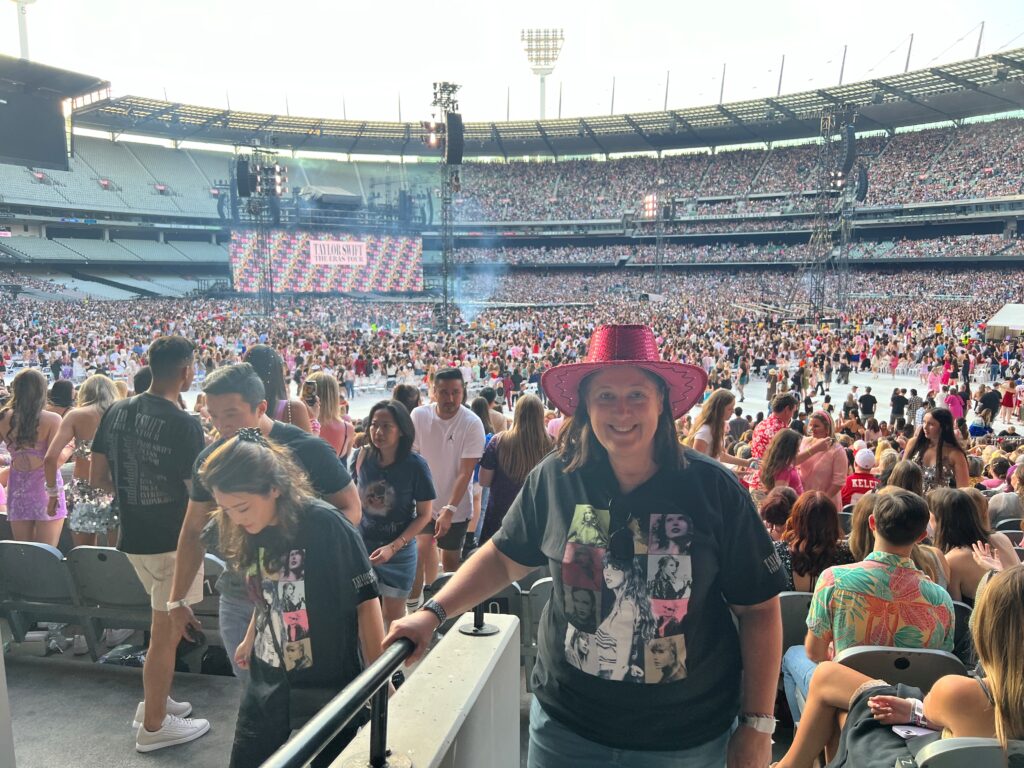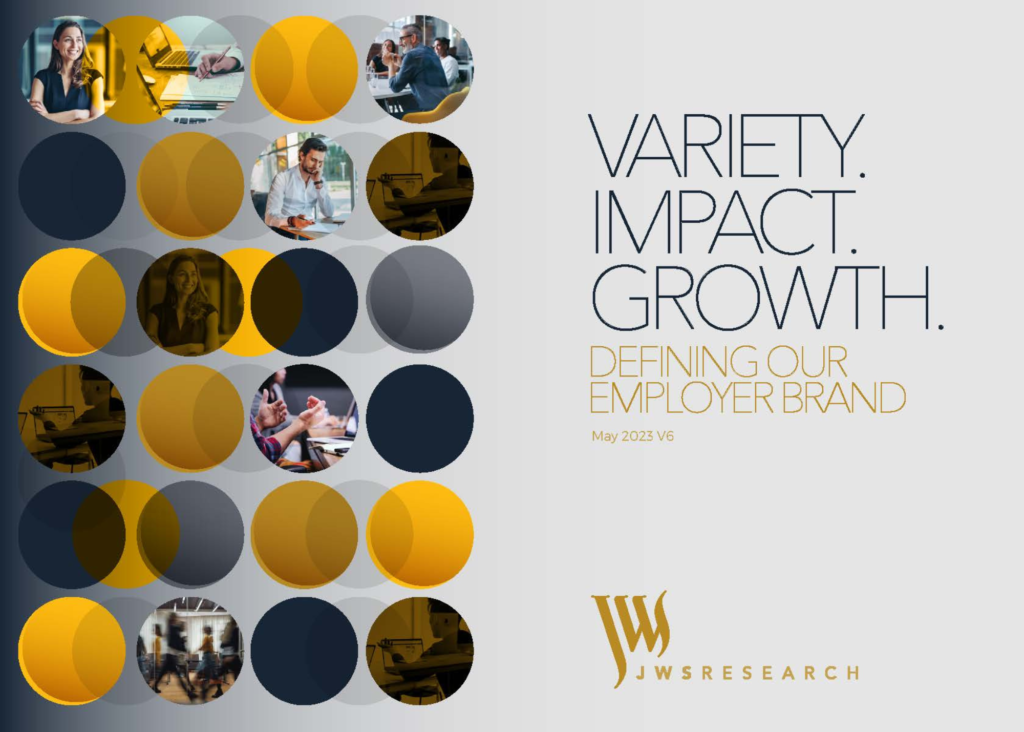PODCAST: The importance on getting discovery right when building a meaningful Employee Value Proposition (EVP).
[TRANSCRIPT ]
Talent Blazers (TB): My next guest has almost two decades leading in-house teams in insurance, technology and banking as well as consulting cross travel, wholesale retail and the financial services sector. His experience spans recruitment strategy and transformation, to technology reviews, market mapping, EVP and employee brand strategies. He is a sought after consultant these days, he’s helping businesses to improve the way they hire Jason burns, welcome to tell places.
Jason Burns (JB): Thanks so much for having me, I really appreciate it.
TB: Yeah, I’m really looking forward to unpacking this episode, we’re going to be focusing in on the importance and the process of getting the discovery right when building a meaningful EVP. Before we jump into that, do you mind sharing who is Businessary, the business you represent?
JB: Yeah, for sure. Businessary is a small management consultancy. We’re largely former colleagues from our time in in-house leadership, HR and marketing teams. We’ve got three core pillars in our business, there’s a business strategy and planning space. We got a very successful digital marketing / communications business. And then there’s the HR and people stream where I sit within specialising in talent. And it’s not just former colleagues, though, we have let others in and have benefitted from having people with our relationship network that come and help grow this really fun and, and vibrant and adult business.
TB: Yeah, nice. Well, apart from doing many large EVPs, at other organisations that you’ve worked with, you’ve done a number of them through Businessary as well. And you’ve probably got a bunch of them on the go. How many are you juggling at the moment?
JB: We’ve got about six or seven at the moment. And almost all of them coming towards the conclusion of the creative space and allowing our clients to actually go there and start bringing them to life. But it’s been a buoyant year, and this financial year starting off really well. So we can have another two or three that we’re just about to commence. So in a real variety of different kind of types of clients, different industries, sizes, motivations, business drivers, as well. So it’s a really exciting space. And it’s really rewarding and it sounds kind of cliché, but it’s actually an immense amount of fun working on this type of work.
TB: Yeah. And you mentioned just a little bit offline that the discovery process is really the most meaningful part of building an EVP in your opinion. Do you mind if you just share why you believe that to be true?
JB: Yeah, yeah, well, there’s four or five key components of building up an employer brand. And that starts with discovery through the development of the brand strategy through design and assets, and then deliberately through campaigns and the way that you use it. But I think if you look at Discovery, as you know, even remove the EVP connotation to it, I think we’ve probably all of us have been caught out when we have gone straight to solution mode. And not maybe done enough groundwork or enough research or planning for a programme a piece of work or initiative, a business opportunity. And without kind of research and understanding the nuts and bolts in the plan and what it is you’re actually selling or what services you’re actually delivering, then really, you’re shooting in the dark, and it’s guesswork. And so, you know, you wouldn’t kind of know your car company would launch a car without doing its research on… Does somebody want to buy it? Does it going to go fast enough? Is that going to satisfy the wants and the needs? Is it going to be cost effective? Are people going to be brand ambassadors for it? You would never do that with a product and why would you do that with a career opportunity and a product… An experience that somebody that’s essentially buying from you and trusting you with their career? Why would you go to market with guesswork, about what it’s like to work in an organisation? It just doesn’t make sense to not do it.
TB: Yeah. I really love the concept of training or EVP, like a product and there’s a lot of takeaways from from from companies who are taking new products to market. Obviously, an EVP, the project leaders should be thinking about collecting data from various sites. How do you think people should be thinking about the interviews and the cohorts of types of people they should be interviewing?
JB: Yeah, look, I think there’s a wee bit before that, you know, in terms of your objective and why you’re doing it. So I think I don’t think there would be a Talent team locally in Australia that wouldn’t know they have to do something, to improve the way they tell their story and attract, and, importantly, retain talent. So you need to have kind of the purpose and objectives of why you do EVP and an employer brand. It’s not just necessarily about talent, attraction and retention, it should also be about how is it going to solve a business problem that you may have or meet the demands of your business strategy as well. And I think unless you have that, then the story that you’re going to tell when you bring people together to do your discovery work is going to be flawed. And the starting point usually is, or the barrier and then the starting point really should be getting your leadership team to own and really be involved in the EVP and the employer brand. So my view as you bring those two clear sets of segmentation that you look at when you do your focus groups. So my experience of it has been, and the way that we do it at Businessary, is we would generally talk individually to almost every member of your leadership team, including your Chief Exec. A couple of reasons behind that, of course, you want to understand their employment experience, the strategy for the business, but there’s also to ensure and buy-in happens at that level. Because quite often, you know, as it sits within the custodian of EVP is HR and the Talent Team, and you can be waving the flag or shaking the tree from the middle, and you’re kind of on your own with it and that destiny is failure for that stuff. So you really need to get leadership teams on board.
Then, in terms of how do you of source your data and understand what the employee experience is like? Well, there’s some steps that we almost insist on, in the way that I run the discovery pieces of work. And that is, you should really be talking to people within your organisation that you consider talent. So the high performers, high potential people that are going to drive your business forward, they’re truly engaged. They are people who you would be devastated to lose. And why would you do that? Because there’s always a component of people that are unhappy in your organisation, and that don’t perform – leave the engagement survey to let people whinge and moan. This is ostensibly a really positive piece of work, and you want to hear the view of talented people, because that’s what you want to attract. Right?
TB: So when you’re advocating to speak with the most engaged people, are you taking into consideration a diverse range of people? Or is it more just the the ones that are highly skilled?
JB: Look, where possible, you want a range of diverse views and thoughts and ways of thinking and approach but it’s not always possible. So is it the first lens, no, you know, I’d be really honest and open with that. But where possible. If you’ve got the luxury of usually the bigger organisation, you have the luxury of selecting from numerous people that you want to talk to, but less can be more as well. So diversity, absolutely would be great, but it’s not always the focus, because you just don’t have it. And that could actually be one of the drivers of building your EVP and your employer brand strategy and how you bring that to life to attract. You can often identify through some of this information that you are lacking in diversity in certain areas. And that can be a business driver. But what is critical in my view, and remains proven is talented, engaged, people give the best output and give you the best data. And where possible, we try and segment those focus groups into their talent segments. So, all your tech together, your software developers together your marketers together, your call centre people, your branch people if you’re distributed. And that gives you really, really good quality data in the first go in that you can almost segment it. You can bubble everything up to get a sense of the whole organisation commonalities for the EVP employer brand, but then what you also sit with is segmented data. So you can actually see whether there’s nuances and differences because how you got a market for a call centre operator, you know, should be different from how you got market from a software developer and different jobs, often different motivators that brought together commonly across the organisation in terms of some of the drivers.
TB: Are the questions much different from interviewing the executive team versus the people who are high achievers within the organisation?
JB: No, they tend to, there’s some common questions that we would always ask across those cohorts. The questions within the employee focus group talent segmented groups are always the same, because it helps with the consistency of the analysis and the ability to calibrate that. The Exec is a component of, there’s two parts usually, because they will have the lens of, quite often they want to tell you what they think the organisation is about, and what other people’s experiences are, and we allow for that. I also want to hear what their own employee experience is.
TB: Are they a bit more inspirational, the executives?
JB: …I think there is often some disconnect from the reality of the organisation. Now my experience on it has never been so drastically different has been terrifying. That hasn’t been the case. But there have been occasions where we’ve had to have a conversation to say (I’m trying to give some examples without giving away too much), but there was a client we work with, where, there’s a real sense of family, within the organisation, what they do, their purpose is children-oriented. There was a commonality that it’s probably as beneficial to be a parent to work within this organisation, to connect with a brand – that was quite wide within the exec group, and then, within the employee community, it was absolutely no, it doesn’t make any difference whatsoever. That was quite an interesting dichotomy there that we have to go back and go, well, this is what we heard. And it does disconnect a wee bit. That wasn’t overly dramatic, but there can be a disconnect. And that’s often the case within any organisation, you know, between the exec and the boots on the ground population. But the executive, or the leadership interviews that we do, in part, are quite strategic in ensuring buy-in. I think I mentioned this before, you really want your CEO to either be completely on board with an employer brand feel of a custodian, or, can fake it enough to be convincing. And then you know, this is an ongoing journey, you know, you just don’t do marketing once or recruitment marketing, once, so we have to get marketing on board with us in terms of resource and assistance or on occasion, just to kind of keep out of it. You know, you can’t be half pregnant with that kind of stuff. The CFO, it requires funding. So I try and set the scene for my talent acquisition colleagues, to ensure that we get everyone on board. And it’s a good reminder to go during the executive interview, ‘I need to remind you that you committed to this, are you still on board’. It’s a big change management piece of this stuff. And people realise they need it. It’s desirable, they want to go down this pathway, but it’s an ongoing piece of work, you just don’t do this once. It lives, it breathes, and it should be constantly on the agenda. So it’s a big change management piece as much as as having a beautiful, meaningful, authentic EVP at the end of it.
TB: How do you think the executive team should be introducing the idea that an EVP is being developed to encourage high achieving employees to be their authentic self to share? You know, the good and the bad, which is really what you want to get, what you want to hear
JB: Yeah, I think it’s leading from the front as well, you would hope, any executive or C suite member can at least realise what’s in it for them to build an EVP and Employer Brand, but I think we make the mistake of, and, we’ve made this our own fault as a community in HR, is that it’s not some HR ‘piece of fluff’. That’s about creating a really beautiful video or polishing up your job ads. There’s actually business drivers, there’s a saving to be made to cut turnover in the first six months, it’s about how quickly you know, there’s organisations we were working with going through big technology roadmap changes that aren’t technology businesses, by getting the right talent on board quickly that roadmap can be achieved much more quickly. By bringing in better engaged salespeople into your organisation, hopefully your revenue will increase.
And in some occasions, we’ve discovered that long tenure has been a problem – and parts of the organisation its stymied growth and diversity of thinking and your ability to pivot what your organisation is about and who you are and the destination. Whilst your EVP should maybe be maximum 20% aspirational because otherwise it’s not authentic, there is reasons to maybe emphasise the aspiration to lead people to go, ‘Well, maybe this isn’t the place for me to stay, maybe this isn’t the place for me to come and join’. Your EVP and employer brand, and I position this all the time – and my view, is as much about telling talent what you’re not, as opposed to what you are, it’s the same thing. Because if people know what you’re not, but they know what they’re getting, or they know some of the pitfalls, or the things that they might not love so much about an organisation, ideally, they’ll opt out early, they’ll not apply, they’ll not become part of the organisation or if they do they know what they’re getting. And I think that’s really important.
We see a few examples of that, particularly there may be industries that are that are aspirational, or people have a perception of what it might be like, but the reality is quite different.
TB: So a good EVP should be able to repel people as much as lure them into the organisation, to buy in what it’s really like to work within the business. Do you do you see that the consumer brand can often detract from, or be a benefit to the employer brand?
JB: Yeah, it’s a good question. I think repelled probably a strong work. But you know, it’s the right word. You know, you want people to make good decisions before they buy. But before they commit, and I think that’s your employer brand. It should be three things, I always say: it should be authentic, authentic, and authentic. If it’s one of those, you’re onto a winner right away.
And that’s about giving people insight into what you’re not. And also, I think the consumer brand can get in the way, because you create a perception of what it might be like to work somewhere based on the product, perhaps. We work with a great organisation, we’re working with Baby Bunting, we’re doing their EVP and Employer Brand at the moment. And it’s really important for people to know when they come to selecting stores whilst they are working with lovely products, and it’s a great time in people’s lives, retail is really hard work. You’re going to be dirty, you’re gonna be working unsociable hours, you’ll have to climb, you’ll get that polo shirt ripped. It’s hard, hard work.
And we also you know, there’s other aspirational industries, where we work, with a fertility business, it’s really important that people make a decision to go, that is an amazing outcome for some people that go through that journey. But if you’re a nurse in that space, you’re quite often dealing with people that that is the end of the road, it’s never going to work. The dream of being a parent is not going to happen. And that’s something really important to decide before you come on, because that’s an emotion that you just wouldn’t get. So it’s, again, it’s about telling people what you’re not is as important as telling people who you are, but as long as it’s done authentically. And we see that in every job ad, every job ad, at least 80% of them will say ‘great culture, great place to work, need to be resilient’. It’s all nonsense. There’s no context behind it.
TB: So much more they can do. All right. Last question. We touched on the focus group and interviewing people. What are a few tips for the types of questions when you are interviewing the high achieving people? You you’re doing it all in one room? You’re using Zoom these days? How are you, what types of questions are you asking to provoke conversation?
JB: Well, the format you do, in terms of where you’re comfortable, but you know, I mean I’m obviously going to say this as a consultant, but I’m saying this from experience. The best thing I ever did when I was in-house and I was dragged towards this was to bring someone else in to do the focus groups. Because you cannot help in your mind, particularly when you’re in HR, justifying when you do hear the things that are challenging, or maybe not so great about the organisation, you’re in your brain, you’re justifying, you’re going, well, you knew this. Or you knew that before you got in, you can’t help it. So that external eye is really, really important, it was the best thing we did when I was in-house. But of course, I’m going to say that as a consultant.
But what we originally did pre-pandemic, these focus groups were all done in-person around the room, post it notes, trying to write notes, remember what you were hearing, usually with a scribe, and they were effective, and they worked well. The best thing about doing this through the pandemic was doing it via teams or a zoom. You were contained. We could do it in an hour and a half. Whilst it was smaller groups and you had to get into the swing of engaging via the camera, you were also able to use chat to get people to jot down their thoughts. We’re able to transcript ideas, we’re able to manage the conversations really well. And what that actually created for us was the ability to calibrate that discovery much quicker – cut that in half.
In terms of the questions, I mean, there’s nothing, I’d love to say some real ground-breaking IP here that changes the way you do the discovery work for an EVP but it’s not. It’s really about understanding what are the motivations for that talent to have joined the organisation? How has it matched what they thought they were getting? What gets people motivated and out of bed in the morning? One question I do ask and you can have this one is, imagine the only way we could recruit was to stand on top of the building and shout and yell about ‘this is why you have to join here – this is the reason you come’ – what would you yell? That’s a bit confronting for people to get their head around. And it’s also about being considerate towards some of the things that are challenging or tough or what should potential talent really consider before they consider leaving their current job and joining you. And those are often the things that can be more challenging.
One of the interesting parts is though, and I still find this really bizarre every time I do it, we focus so much in thinking EVP is ‘benefits’. You know, this is a benefit, your foosball table or have a fridge full the milk or something, all that carry on that we put on job ads. But one of the questions we ask is ‘tell us about the benefits that you admire the most within your organisation? What do you use? What should we be telling people? And what would you like to have?’ That question is almost always the toughest one to answer, people don’t get it. So, the HR team is spending heaps and heaps of time worrying about their benefits, don’t. Because I just don’t think population care. It’s actually way more about the employment experience they get, the connectivity, how connected they are to the brand. What’s in it for them from a career perspective, benefits is 5% if it’s anything in my experience, but we spend so much time worrying about them.
TB: And do you find it beneficial reflecting on the meeting? I’m assuming you’re advocating to record the session via via teams or zoom?
JB: Yeah, we record that, but we never share it. So it’s a safe space. We calibrate that data. We anonymise it, were possible. It’s like an engagement survey, right? You want it to be confidential and people feel – it’s ostensibly a great piece of work, it’s a fun piece of work, but we anonymise it. And we never ever share the videos. It’s only for my consumption and my colleagues when we calibrate it.
TB: Yeah, nice one. Well, we will definitely be sharing this episode. It’s been really insightful. And it’s been an absolute joy having you on Talent Blazers. Thanks for your time, Jason.
JB: Thanks for having me. Appreciate it.




